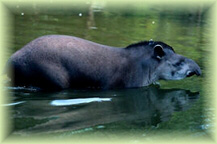
The head of Productive Projects of Investigation and of the Reserve of the Biosphere of the Tuxtlas, Henando Cabral Perdomo, affirm that other 20 species are in serious danger to disappear, among them 6 reptiles and 2 amphibians classified like endemic (This meands that they exist in that region only, reason why its local extinction, also represents its complete disappearance of the planet for always) Between these are the tree small lizard (Abronnia sehizardi), the small lizard reigns (Abronnia Reidi), in addition to the little frog of marsh and the green frog of the pineapple. Of these last, they have only seen 5 in the pasts 10 years.
In the Reserve of the Biosphere of the Tuxtlas whose vegetation consists of manglares, savannah and cadocifoleo forest, it constitutes the last surplus of more important high tropical forest in the North hemisphere of the continent. In there, they inhabit 128 species of mammals, 51 of birds, 117 of reptiles, 5 of amphibians, 550 of butterflies, 1 of libélulas and 800 vegetal species count at the moment.
The forest destruction , the furtive hunting and the advance of agricultural and cattle activities over the pasts 40 years have caused a significant alteration in this ecosystem, put the area in heavy danger so it was declare as a protected ecological reserve in November of 1998.
Source: "La Jornada" Newspaper, May 11 2002
Compilation: Alejandro Arias del Razo.
